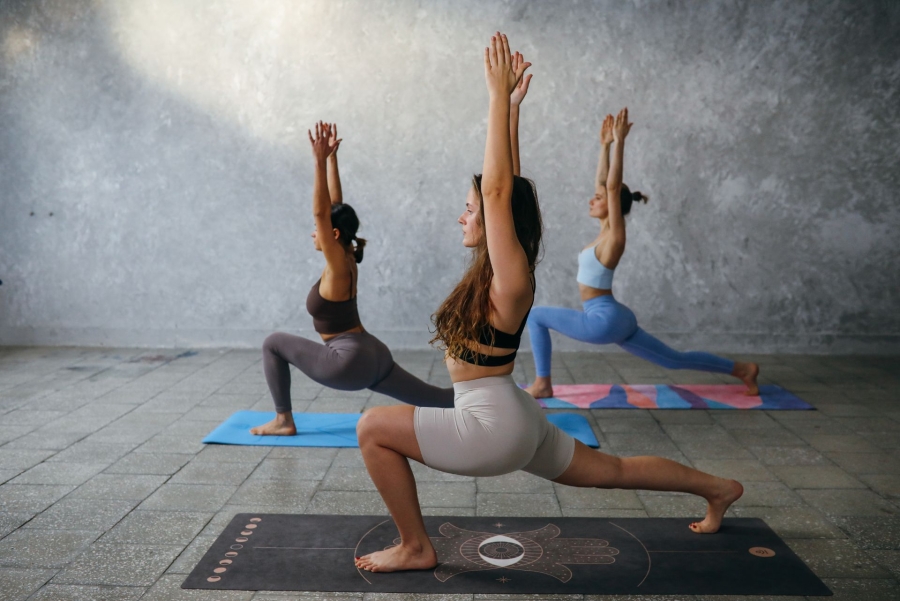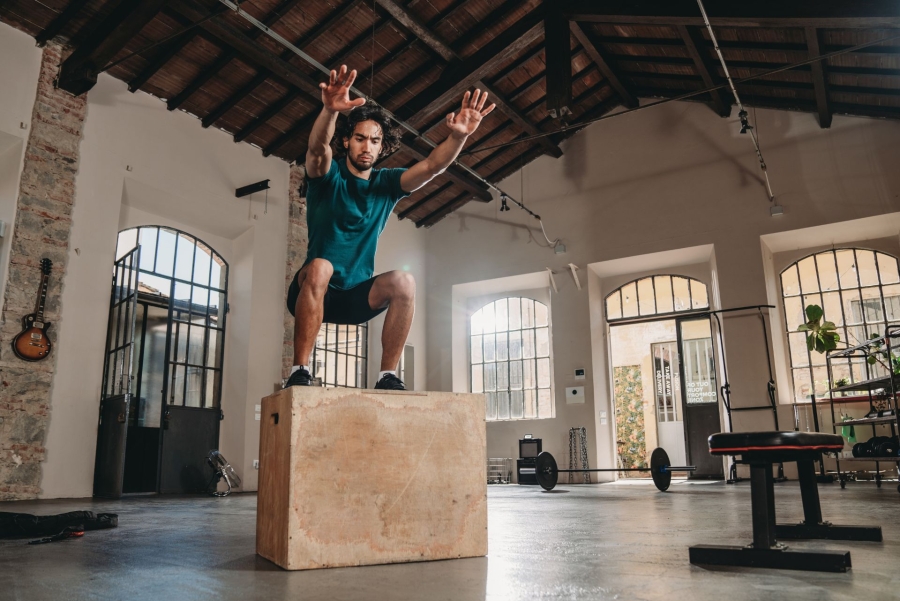Discover the latest statistics and trends in the dynamic world of fitness shops. Gain valuable insights into industry growth, consumer preferences, and emerging market trends.
A brief foray into fitness shops
The fitness boutique industry has seen a boom in popularity as consumers increasingly turn to fitness studios for a more personalized and unique workout experience. The latest statistics on the fitness boutique industry indicate that gyms are expected to hold the largest market share in the fitness boutique industry by 2027.
Fitness shops are a subset of the fitness industry that offer specialized workouts in small, intimate spaces. These studios typically focus on a specific type of exercise and provide a high-end experience that often includes high-end equipment paired with experienced instructors.
As 2023 dawns, the boutique fitness industry continues to be a rapidly expanding segment of the fitness market, driven by changing consumer preferences and technological advancements .
This blog post explores the latest statistics and trends in the boutique fitness industry to provide insight into market growth and opportunities.
Fitness shop concept meaning and industry overview
What is a Fitness Shop?
Fitness shops are a type of fitness facility that provides specialized workouts in small, individualized settings. Unlike traditional gyms which offer a wide range of equipment and classes, fitness shops focus on a particular type of exercise, such as Pilates, yoga, boxing, cycling or interval training high intensity (HIIT).
Boutique-style fitness studios provide a distinct customer experience through private sessions, top-tier instructors, and cutting-edge equipment. This approach has proven popular with consumers looking for a more customizable and engaging fitness experience.
The fitness boutique industry – a booming industry
In the fitness industry, consumers increasingly tend to choose fitness studios for their workout needs. The global fitness studio market was valued at $49.3 billion in 2021 and is expected to reach $66.2 billion by 2026, according to Research And Markets. compound annual growth rate (CAGR) of 6. 1% over the forecast period. This remarkable expansion can be attributed to several factors, including changing consumer preferences, advancements in technology, and the mainstreaming of fitness as a lifestyle trend.
Additionally, the continued growth of the boutique fitness industry has led to the emergence of new, innovative business models, such as virtual fitness classes and on-demand workouts. Looking ahead to 2023, we expect the retail fitness industry to continue to grow and evolve as consumers demand more personalized and convenient fitness options.
Fitness Shop Industry Statistics and Trends
Key statistics provide an overview of how the industry has evolved over the past few years. Here are some examples and trends that illustrate the expansion and potential of fitness shops:
Market size
The global fitness store market was valued at USD 49.3 billion in 2021 and is projected to grow at an CAGR of 15.2% between 2022 and 2028 . (Research and Markets)
Consumer spending
A gym membership costs an average of $51 per month, although boutique gym memberships are slightly more expensive, costing an average of $90 per month. Despite these typical rates, it should be emphasized that over 40% of people who attend to the gym pay less than $25 for their membership. (IHRSA )
Popular activities
The most popular activities in fitness shops are yoga, Pilates, barre, indoor cycling, and HIIT and HILIT workouts . (RBH )
Demographic data
The average age of fitness shop members is 30 years old . In contrast, the average age of all gym users is 40 . Women are more likely to attend studios focused on yoga, barre, and Pilates, while men have a higher membership rate at studios focused on cross-training and boot camp.
Technology
The wearables market is expected to reach 1.1 billion in 2022 as telecommunications technology transitions from 4G to 5G. Wristwear (watches and bracelets) will reach nearly 180 million units by 2023. (Statista )
Priority to health and well-being
Fitness shops often take a more holistic approach to health and wellness, emphasizing community building, mindfulness and mental health.Two-thirds of gym members would rather workout with people than alone, and live fitness classes are the most popular option at gyms (HCM).
Expansion
The fitness boutique industry is expanding beyond traditional markets such as the United States and Europe, with growing interest and investment in markets such as Asia and the Middle East. (Research and Markets)

What is driving the demand for fitness studios?
The growing trend of urbanization, growing middle class, and increasing disposable incomes are driving the demand for gyms, health clubs, and fitness centers.
In addition, the sedentary lifestyle of the young population of working age with sufficient disposable income has promoted the occurrence of various diseases, thus creating an increased demand for fitness studios. On the other hand, health clubs are trying to retain the segment of Gen X customers, who are more inclined to use the services of health clubs and invest in gym memberships and fitness centers, offering personalized service options.
North America is expected to hold the largest share of the global fitness studio market, followed by Europe. However, emerging markets in the APAC region are expected to witness the fastest growth rate in the coming years.
The rise in boutique-style gym memberships is primarily attributed to the preferences of today’s millennials, who prioritize ambiance, community, and overall experience over price.
Boutique-type fitness centers offer a pleasant atmosphere and experienced trainers, which further propels the global boutique fitness market. However, as fitness stores continue to expand and saturate the market, they may face intense competition and a potential drop in membership prices. Nonetheless, rising health awareness, attention to body image, and rising living standards of millennials provide opportunities for market growth.
What are the most popular activities of fitness shops?
Fitness shops carry a variety of specialty exercises, each offering unique benefits that aim to appeal to all segments of the population. Here are some of the most popular activities:
- Yoga : A popular exercise that emphasizes strength, flexibility and mindfulness . Yoga studios offer a range of classes, from gentle flow to power yoga, to suit different skill levels and individual preferences.
- HIIT : High Intensity Interval Training (HIIT) involves alternating short bursts of intense exercise with periods of recovery. HIIT studios provide a challenging and effective workout that burns calories and builds strength.
- Pilates : Pilates is a low impact exercise that strengthens and tones core muscles. Pilates studios offer equipment-based classes that use resistance springs for challenging workouts.
- Cycling : Indoor cycling studios offer a fun and energetic workout that helps improve cardiovascular health and burn calories. Classes are led by certified instructors and punctuated by lively music.
- Boxing : Boxing workouts typically involve cardio and strength training, using punches, kicks, and other movements to provide full-body exercise. This is an energetic and challenging workout that can help relieve stress and boost self-confidence.

Who are the big names in fitness shops?
The boutique sector has attracted a variety of established players and newcomers to the market. Here are the big names, including some European brands:
Equinox
Equinox is a luxury fitness and wellness company that operates premium fitness clubs, including its popular brands SoulCycle and Precision Run. Equinox is present in the United States, Canada and the United Kingdom.
Pure Bar
Pure Barre is a barre-based fitness franchise that offers low-impact workouts designed to tone and strengthen your entire body.
Orangetheory Fitness
Orangetheory Fitness is a fitness franchise that offers high-intensity interval training (HIIT) workouts, using heart rate monitors to track performance. Orangetheory Fitness is present in the United States, Germany, Israel, Japan and several other countries around the world.
F45 Training
F45 Training is an Australian international fitness franchise that offers functional workouts, combining strength and cardio exercises for a full body workout. F45 Training is present in 45 countries.
The mills
Les Mills is a New Zealand-based fitness company that offers a range of group fitness programs including BodyPump, BodyCombat and RPM. Les Mills creates and distributes group fitness classes delivered in more than 18,000 accredited establishments in 105 countries.
Barry’s Bootcamp
Now known as Barry’s, this American fitness franchise offers high-intensity cardio and strength training sessions. Barry’s is present in the United Kingdom, Canada, Italy, Sweden, Australia and the United Arab Emirates.
These are just a few examples of the major players in the fitness boutique industry, with a mix of American and European brands. Other notable players include CorePower Yoga, Peloton, Flywheel Sports, and CycleBar.

Key Growth Drivers: What’s Driving the Fitness Boutique Industry?
Fitness stores have experienced significant growth in recent years, driven by several factors:
Consumers are increasingly looking for personalized fitness experiences that meet their needs and preferences. Fitness shops offer a range of classes and activities tailored to specific interests and goals, providing a more personalized and enjoyable journey.
Technological advances
Thanks to advances in technology, it is now easier and more convenient for consumers to access fitness classes and track their progress. Many fitness studios offer online and on-demand classes, allowing consumers to participate anywhere and anytime. Additionally, wearable technology , such as fitness trackers and heart rate monitors, have become increasingly popular, providing consumers with real-time feedback and data on their workouts.
Social media
Social media platforms, such as Instagram and TikTok, have helped to significantly promote in-store fitness classes and brand awareness. Many fitness studios have developed a strong presence on these channels, showcasing their classes and instructors and leveraging user-generated content to engage with their audience.
Health and Wellness Trends
The growing emphasis on health and wellness has also contributed to the growth of the fitness boutique industry. Consumers are looking for holistic approaches to fitness and wellness, with a greater emphasis on mindfulness and self-care. To meet these needs, fitness studios often offer a range of activities beyond traditional exercise classes, such as meditation and nutrition coaching.
Growing investments
Investors have recognized the potential for growth and profitability in this space, with a significant increase in investment across the sector in recent years. This allowed the studios to expand their offerings, improve their technology and infrastructure, and step up their marketing efforts to further advance in the industry.
What are the major challenges facing the fitness boutique industry?
Thriving in the fast-evolving retail fitness industry is not without its challenges.
Here are a few :
Increased competition
With the rise of the fitness boutique industry has come an increase in the number of studios and classes available. This increased competition makes it more difficult for individual studios to stand out and attract new customers.
High operating costs
Fitness studios often have higher operating costs than traditional gyms due to higher rent, specialized equipment, and highly trained instructors. This hurdle can make it difficult for studios to be profitable, especially in highly competitive markets.
Dependence on instructors
Boutique-style fitness studios rely heavily on individual instructors to drive attendance and build a loyal customer base. The departure of a popular instructor can cause problems and lead to a drop in attendance and revenue.
Limited demographics
Although boutique-style fitness studios offer a range of classes and activities, they may only cater to certain demographics. For example, older or less mobile individuals may find it difficult to participate in certain categories, while others may prefer more traditional gym equipment and routines.
Economic uncertainty
The COVID-19 pandemic has had a significant impact on the fitness boutique industry, with many studios forced to close or reduce operations. Continued economic uncertainty and the risk of future disruptions may pose ongoing challenges to the sector.

What to expect in the future?
Despite the difficulties encountered, the outlook for the sector remains positive. Here are some factors that should influence it in the years to come:
Increase in consumer demand
In recent years, consumer preferences have shifted towards boutique fitness classes and experiences, influenced by social media, changing attitudes towards health and wellness, and a desire for personalized, community-driven fitness experiences.
Technological advances
The evolution of technology has played a crucial role in the growth of the boutique fitness industry and is expected to continue to do so in the future. From wearable fitness devices to virtual and on-demand fitness classes, technology is enabling more convenient and personalized fitness experiences.
Expansion into new markets
The fitness boutique industry has grown significantly in the United States and Europe. However, there is still significant growth potential in other markets, particularly in Asia and the Middle East.
Diversification of the offer
To stay competitive and attract new customers, fitness studios will likely continue to diversify their offerings, focusing on incorporating new classes, new technologies, and new equipment.
Emphasis on wellness and holistic health
Consumers are increasingly looking for holistic wellness and health experiences . Fitness studios are well positioned to meet this demand by emphasizing not only physical fitness, but also the importance of mental and emotional health.
Final Thoughts
The fitness boutique industry’s focus on personalized experiences and holistic wellness has gained traction around the world. Despite challenges such as competition and high operating costs, the sector is realizing its promising growth potential.
By staying innovative and adapting to changing trends, fitness studios can capitalize on the growing demand for unique fitness experiences.
With consumers continuing to seek personalized and community-driven fitness options, the fitness boutique industry is poised to flourish. Keep an eye out for the latest retail fitness industry stats to stay informed about this dynamic and growing industry.
Link: Participate in a yoga therapy session
Link: How to do sports on a bike using a GPS computer?
Link: Robots and chips: how Elon Musk will bring the future closer in 2023



